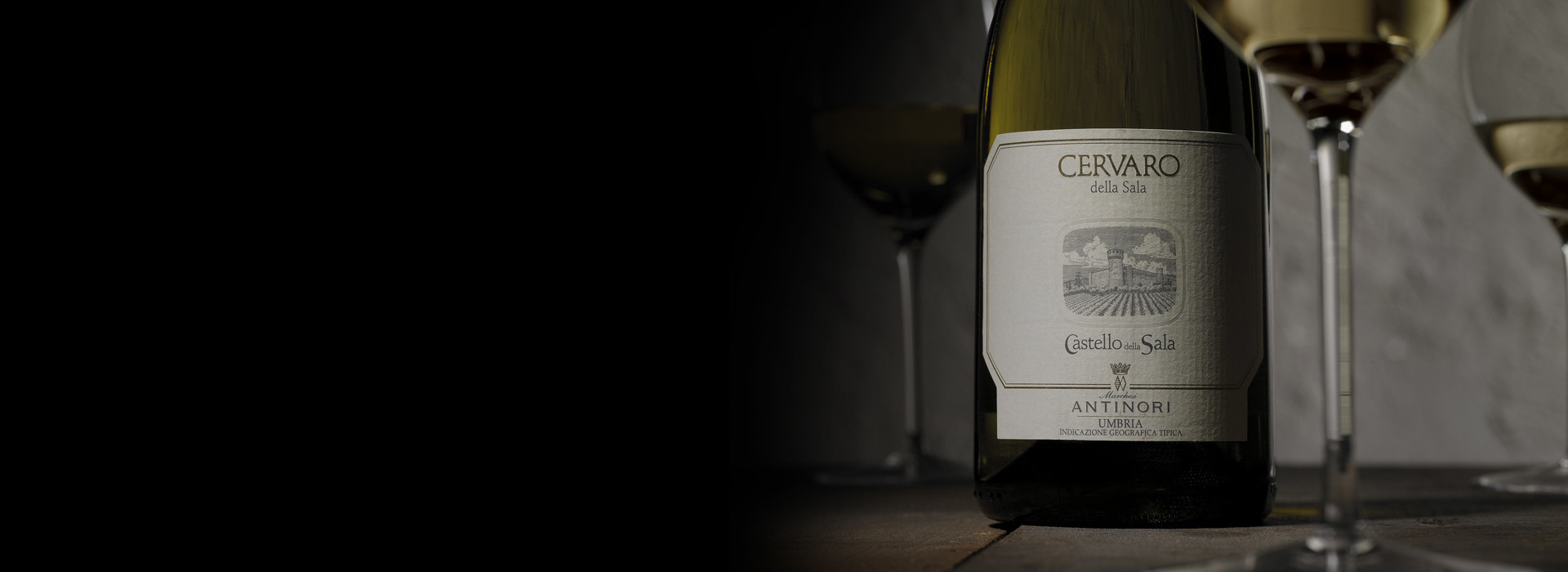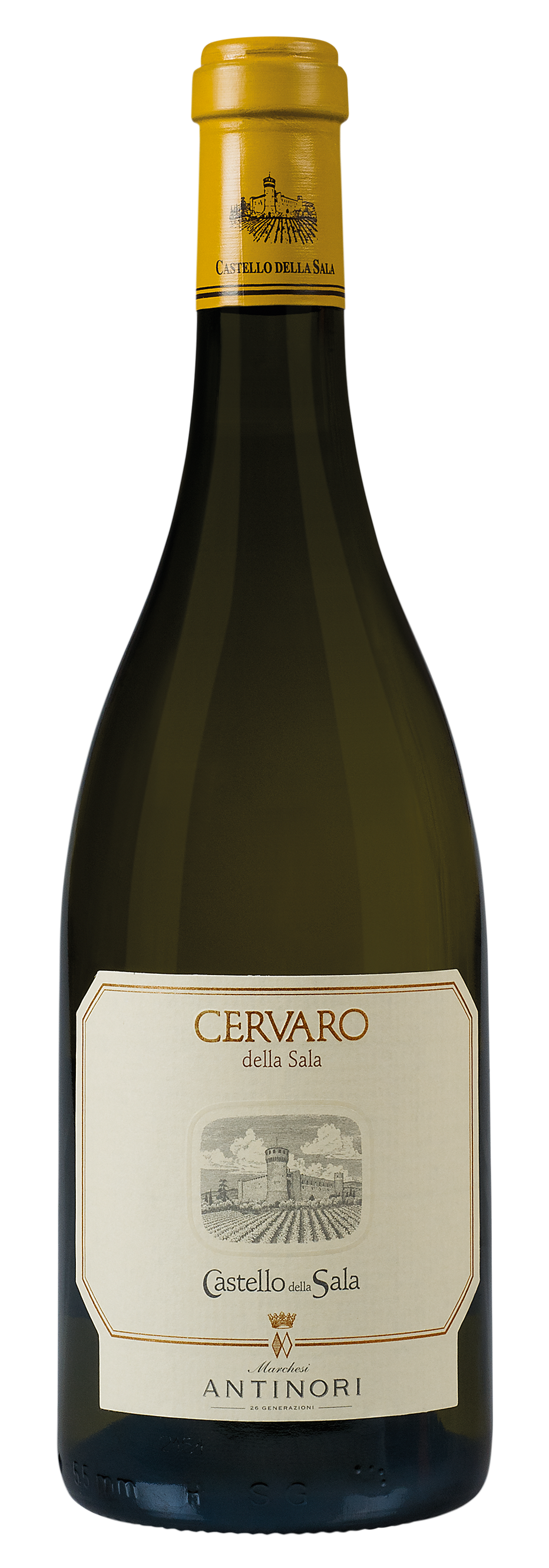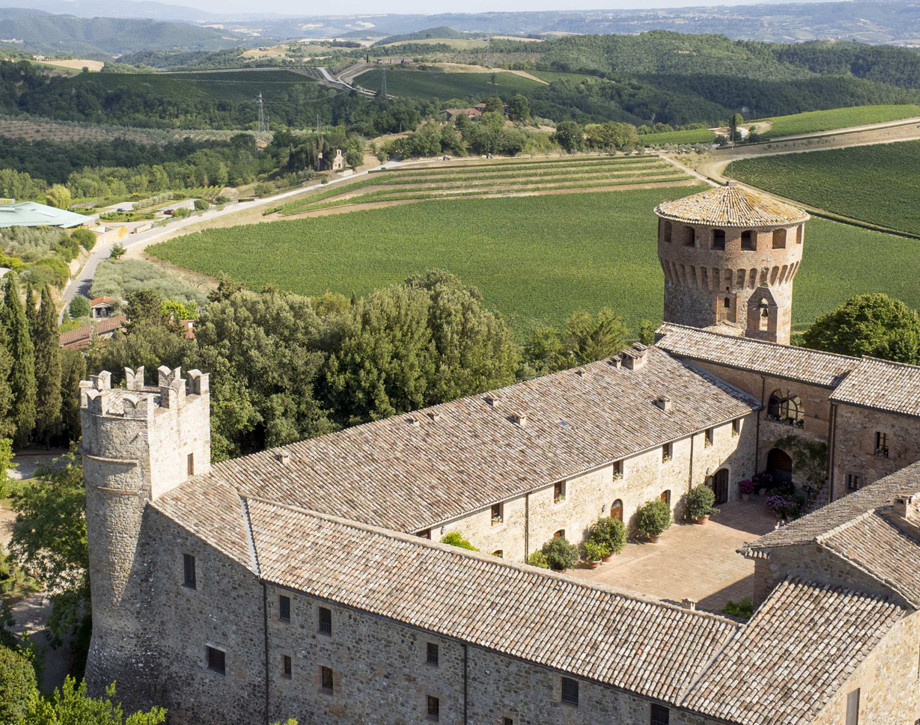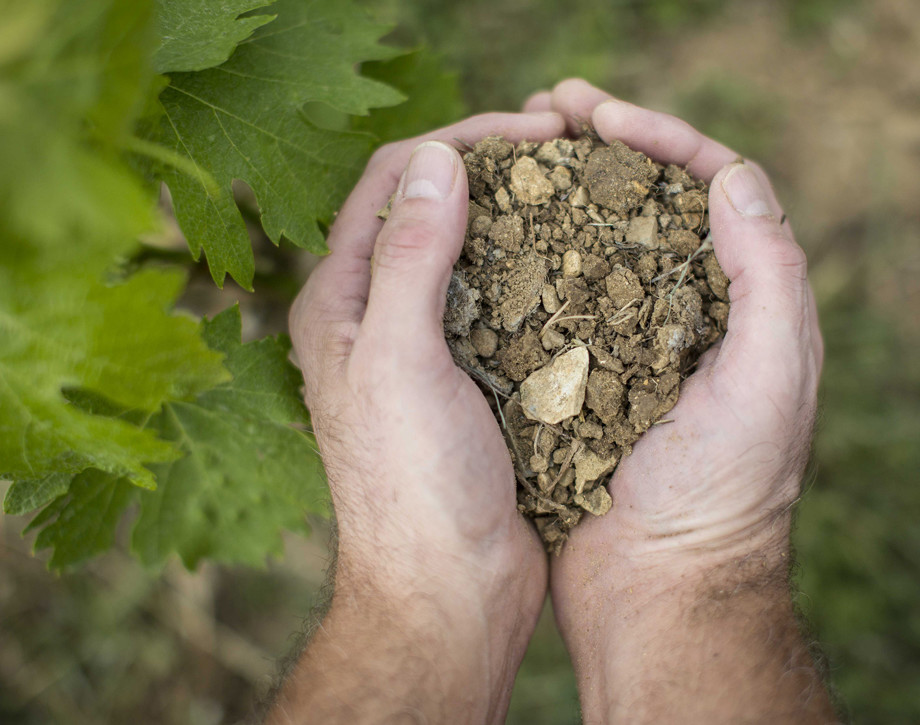Cervaro della Sala

The Wine
The name Cervaro comes from the noble family that owned Castello della Sala during the 14th century, Monaldeschi della Cervara. A blend of Chardonnay grapes and a small quantity of Grechetto make a wine that can age over time and represent the elegance and complexity of this unique estate. Cervaro della Sala is one of the first Italian white wines to have malolactic fermentation and aging take place in barriques. The first vintage of Cervaro to be produced was the 1985 vintage.
Historical Data
The name Cervaro comes from the noble family that owned Castello della Sala during the 14th century, Monaldeschi della Cervara. A blend of Chardonnay grapes and a small quantity of Grechetto make a wine that can age over time and represent the elegance and complexity of this unique estate. Cervaro della Sala is one of the first Italian wines to have malolactic fermentation and aging take place in barriques. The first vintage of Cervaro to be produced was the 1985 vintage.

The Wine
The name Cervaro comes from the noble family that owned Castello della Sala during the 14th century, Monaldeschi della Cervara. A blend of Chardonnay grapes and a small quantity of Grechetto make a wine that can age over time and represent the elegance and complexity of this unique estate. Cervaro della Sala is one of the first Italian white wines to have malolactic fermentation and aging take place in barriques. The first vintage of Cervaro to be produced was the 1985 vintage.

In Honor of the Monaldeschi della Cervara Family
The wine’s name honors the Monaldeschi della Cervara family who was the historic owner of Castello della Sala in the XVI century.
The Barrique
Cervaro della Sala was one of the first Italian white wines to have malolactic fermentation and aging take place in barriques.
The Concept
The idea behind Cervaro della Sala was to craft a white wine able to age over time.
The Enologist
In 1985, Renzo Cotarella, who was chief enologist at Castello della Sala at that time, made the first vintage of Cervaro della Sala.
Climate
The 2014 vintage was marked by a mild winter with temperatures above seasonal average, and by abundant rainfall. The spring and early summer rains created precious reserves of ground water in the soil. Late summer saw important temperature swings from daytime warmth to evening and nighttime coolness which created the pre-conditions for a slow and balanced ripening of the grapes. Mild September weather allowed picking operations to be organized in an optimal fashion, operations assisted as well by the meticulous vineyard work during the various previous phases of vegetation; this, particularly in complicated vintages such as 2014, guarantees both a quality production and grapes which were incontestably healthy. Picking of the Chardonnay began during the first ten days of September, approximately a week and half later than usual, while the harvest of the Grechetto, physiologically two weeks later in its ripening cycle, concluded towards the end of the month of September.
Vinification
The picking of the grapes to be utilized for Cervaro, just as in the case of other great white wines, requires particular care. In fact, in order to avoid damaging oxidative processes and the extraction of undesirable tannins, the harvest takes place only during the early hours of the morning in order to insure that the grapes which arrive in the cellars are perfectly healthy and not stressed by high daytime temperatures. The attention given to the crop continues in the cellar thanks to the special design of the structure, conceived to take advantage of the force of gravity, avoiding mechanical intervention on the grapes and the must. The must, after an approximately four hour maceration on the grape skins at a temperature of 50° Fahrenheit (10° centigrade), goes into decantation tanks where it loses, in a natural settling, its impurities before going into oak barrels. Both the regular and the malolactic fermentation takes place in oak; it is the latter which regulates the process and determines how long the wine will remain in barrel. Normally, after five months all the lots of Chardonnay are ready to go into stainless steel tanks and be blended with the Grechetto, which has been fermented on its own and entirely in stainless steel. After bottling, Cervaro della Sala is given an additional twelve month period of bottle aging in the historic Castello della Sala cellars.
Historical Data
The name Cervaro comes from the noble family that owned Castello della Sala during the 14th century, Monaldeschi della Cervara. A blend of Chardonnay grapes and a small quantity of Grechetto make a wine that can age over time and represent the elegance and complexity of this unique estate. Cervaro della Sala is one of the first Italian wines to have malolactic fermentation and aging take place in barriques. The first vintage of Cervaro to be produced was the 1985 vintage.
Tasting Notes
A brilliant yellow in color with greenish highlights, the 2014 Cervaro shows a rich, complex, and fresh bouquet of hazelnut butter, vanilla, and white flowers. It is elegant on the palate and extremely savory, crisp, and vibrant. The delicate toasty sensations of the oak barrels blend harmoniously with the structure of the wine, fully bringing out the notes of both tropical and citrus fruit.
Awards
James Suckling 96/100 USA Wine Spectator 91/100 USA Wine Enthusiast 89/100 USA Gambero Rosso Tre Bicchieri Italy Daniele Cernilli 98/100 Italy
Scheda

Castello della Sala
Castello della Sala is located in the Umbria region, not far from the Tuscan border, about 18 kilometers from the historic city of Orvieto. The Medieval castle’s property extends over an area of 600 hectares (1482 acres), 200 hectares (495 acres) are planted with vineyards at an altitude that varies between 220 and 470 meters above sea level (722/1541 feet) on the gently rolling hillsides that characterize the beautiful countryside in this area. Castello della Sala is the perfect place for growing white varieties. The vines grow in clay and calcareous based soils, rich in fossil shells, and they are well exposed to the rising of the sun with an excellent difference of temperature between day and night. The one exception to the rule is Pinot Noir, the only red variety that has found in this area ideal growing conditions to best express its full potential.

Soil
Originating in the Pliocene period, rich in marine fossils with veins of clay.
















